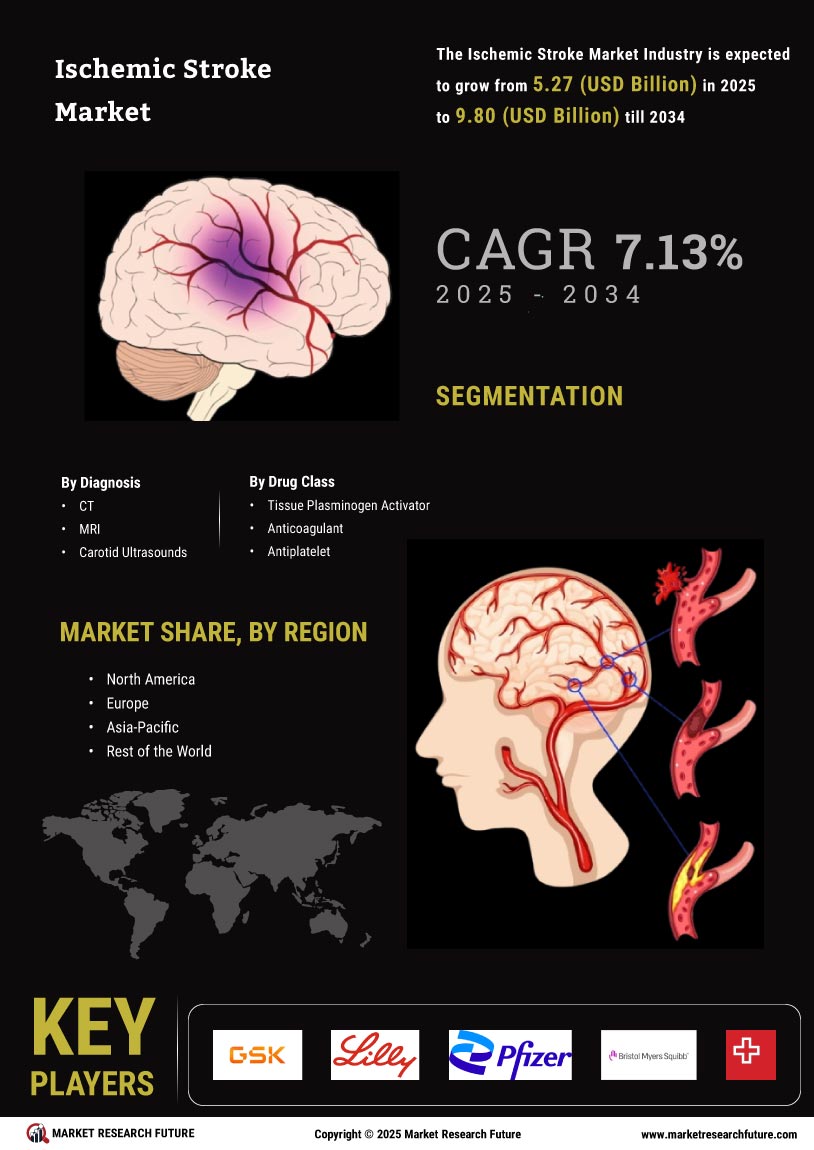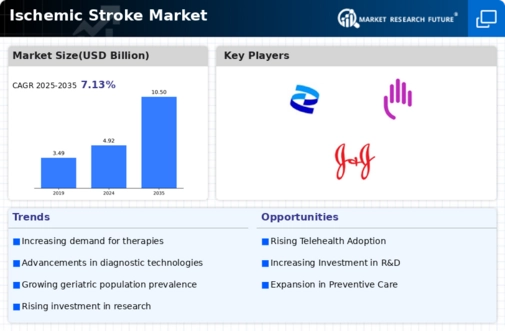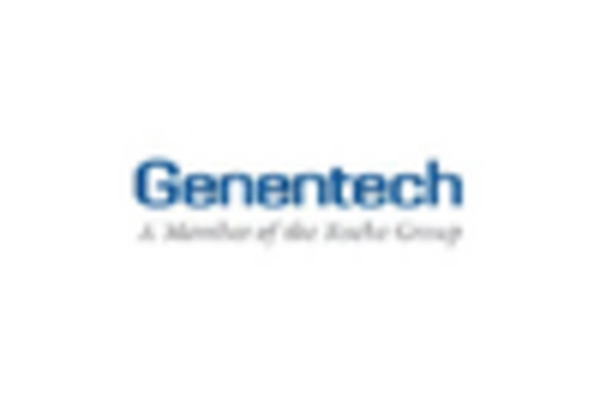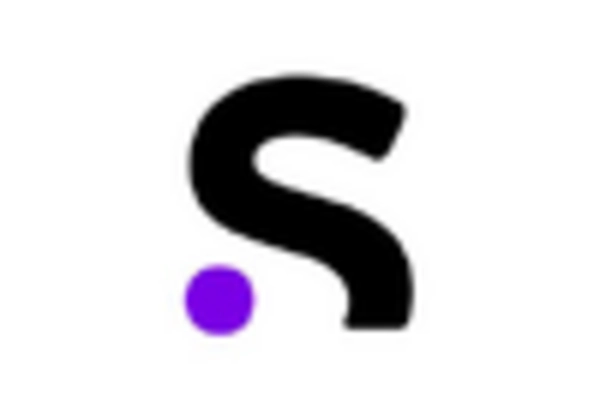Growing Geriatric Population
The increasing geriatric population worldwide is a crucial driver of the Global Ischemic Stroke Market Industry. Older adults are at a higher risk of experiencing ischemic strokes due to age-related factors such as vascular changes and comorbidities. As the global population ages, the demand for stroke prevention and treatment services is anticipated to rise. This demographic shift is projected to influence market dynamics significantly, with the Global Ischemic Stroke Market expected to witness a compound annual growth rate of 7.13% from 2025 to 2035. The implications of this trend are profound, as healthcare systems must adapt to meet the needs of an aging population.
Increased Awareness and Education
Growing awareness regarding the symptoms and risk factors associated with ischemic stroke is driving the Global Ischemic Stroke Market Industry. Public health campaigns and educational initiatives have been instrumental in informing individuals about the importance of early recognition and intervention. This heightened awareness encourages individuals to seek medical attention promptly, thereby increasing the demand for diagnostic and therapeutic services. As a result, healthcare systems are likely to allocate more resources towards stroke management, further propelling market growth. The emphasis on education and awareness is expected to play a crucial role in shaping the future landscape of the Global Ischemic Stroke Market.
Advancements in Medical Technology
Technological innovations in medical devices and treatment methodologies are significantly influencing the Global Ischemic Stroke Market Industry. The development of advanced imaging techniques, such as CT and MRI, enhances the ability to diagnose ischemic strokes promptly. Furthermore, the introduction of minimally invasive surgical techniques and novel thrombolytic agents has improved patient outcomes. These advancements not only facilitate timely interventions but also contribute to the overall growth of the market. As the industry adapts to these technological changes, it is likely that the Global Ischemic Stroke Market will continue to expand, potentially reaching 10.5 USD Billion by 2035.
Government Initiatives and Funding
Government initiatives aimed at reducing the incidence of ischemic stroke are pivotal to the Global Ischemic Stroke Market Industry. Various countries are implementing stroke prevention programs and allocating funding for research and development of new treatment options. These initiatives not only enhance healthcare infrastructure but also promote collaboration among stakeholders in the medical community. By investing in public health strategies and supporting clinical trials, governments are likely to foster innovation in stroke care. This commitment to improving health outcomes is expected to contribute significantly to the market's growth trajectory over the coming years.
Rising Prevalence of Ischemic Stroke
The increasing incidence of ischemic stroke globally is a primary driver of the Global Ischemic Stroke Market Industry. According to health statistics, ischemic strokes account for approximately 87% of all strokes, leading to a growing demand for effective treatment options. As populations age and lifestyle-related risk factors such as hypertension and diabetes become more prevalent, the burden of ischemic stroke is expected to rise. This trend is reflected in the market's projected growth, with the Global Ischemic Stroke Market anticipated to reach 4.92 USD Billion in 2024. Such figures underscore the urgent need for innovative therapies and preventive measures.

















Leave a Comment